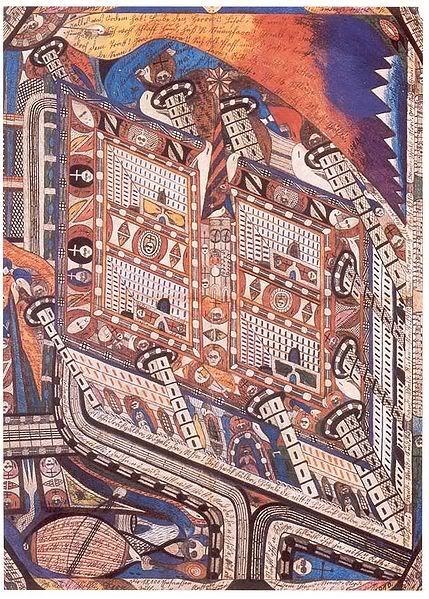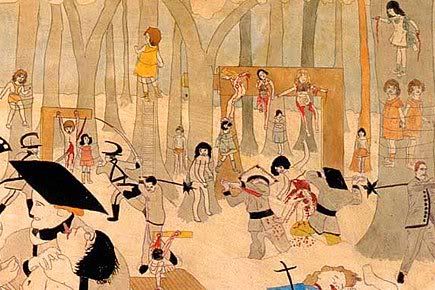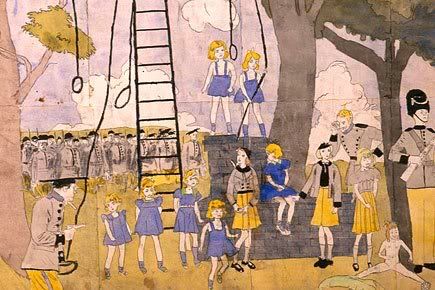A friend recently told me she had written her thesis on “Outsider Art”, which I assumed was a broad term encompassing fringe artists, urban art, non-traditional media, etc. However, I did a bit of Wikipedia-ing(now a verb), and learned that it is actually a term coined in the 1970’s by art critic Roger Cardinal as a synonym for art brut or “raw art”, which is indeed art created outside the boundaries of official culture but more specifically, the work of insane-asylum inmates.
“Those works created from solitude and from pure and authentic creative impulses – where the worries of competition, acclaim and social promotion do not interfere – are, because of these very facts, more precious than the productions of professionals. After a certain familiarity with these flourishings of an exalted feverishness, lived so fully and so intensely by their authors, we cannot avoid the feeling that in relation to these works, cultural art in its entirety appears to be the game of a futile society, a fallacious parade.” – French Artist Jean Dubuffet
Wow!
So basically, there is this whole sub culture of collectors and followers who seek out this type of work. I found loads of galleries that specialize in this genre, magazines devoted to the style and there is even an Outsider Art Fair that has taken place in New York since 1992.

(Adolf Wölfli-“Kraft Cheese”)
Interest in the art of insane asylum inmates had begun to grow in the 1920s. In 1921 Dr. Walter Morgenthaler published his book Ein Geisteskranker als Künstler (A Psychiatric Patient as Artist) on Adolf Wölfli, a psychotic mental patient in his care. Wölfli had spontaneously taken up drawing, and this activity seemed to calm him. His most outstanding work is an illustrated epic of 45 volumes in which he narrates his own imaginary life story. With 25,000 pages, 1,600 illustrations, and 1,500 collages, it is a monumental work.
One theme that seems present through much of Outsider Art was the notion of horror vacui, or literally fear of empty spaces. Therefore, the entire surface of the artwork would be covered in detail. An, early day Where’s Waldo.

(Adolf Wölfli- Irren-Anstalt Band-Hain )
Self-taught or Naïve artists, those with little or no contact with the mainstream art world and art institutions, are also included under the umbrella of “Outsider Art”.
The characteristics of naïve art are an awkward relationship to the formal qualities of painting. Especially non-respect of the 3 rules of the perspective (as defined by Leonardo da Vinci) :
- decrease of the size of objects proportionally at the distance
- enfeeblement of colors with the distance
- decrease of the precision of details with the distance
The results are :
- effects of persective geometrically erroneous (awkward aspect of the works, children’s drawings look, or Middle Ages’ painting look, but the comparison stops there)
- strong use of pattern, unrefined color on all the plans of the composition, without enfeeblement in the background
- an equal accuracy brought to details, including those of the background who should be shaded off
While the work itself isn’t my cup of tea- I think the stories/concepts behind Outsider Art are quite fascinating.
Beach Reading:

(Henry Darger)
Just keepin’ it cheery on a Wednesday, yknow?

Hope you learned athingortwo. ♥






